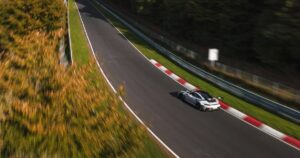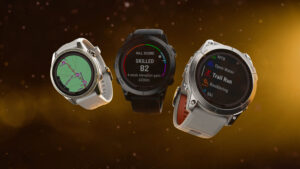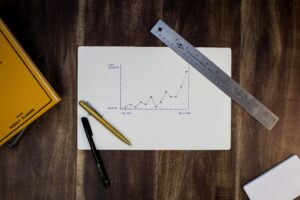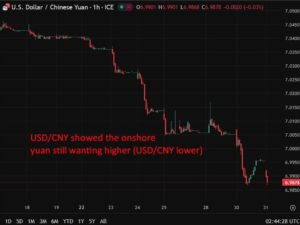
Fifty years ago today, Australia’s longest-running science program, the Science Show, was born. Robyn Williams recorded the inaugural episode of ABC Radio National’s Science Show at the 13th Pacific Science Congress in Vancouver, Canada, in 1975. It was a time when the Cold War loomed large, and the internet was yet to be conceived. Yet, many topics discussed at that conference remain relevant today.
The first episode addressed pressing issues such as the nuclear arms race, animal extinction rates, and the impact of burning fossil fuels on climate change. The only clue to its 1970s origin was the conference theme, “Man’s Future in the Pacific,” and the funky theme tune that opened the episode. Reflecting on this, Williams told David Marr on Radio National’s Late Night Live, “Looking back on it a couple of years later, I thought, ‘Bloody hell, this was a real warning on something people should act on.’ It just shook me that the scientists here were saying what we needed to pay attention to and people weren’t.”
A Legacy of Scientific Inquiry and Debate
Over the past five decades, the Science Show has provided audiences with scientific debate, research, and information on groundbreaking discoveries. It has also served as a beacon for the Australian science community. Fiona Stanley, an epidemiologist and former ABC Board member, remarked, “[The Science Show] is not just radio for entertainment, it’s been a really serious contribution to Australian science.”
To commemorate this milestone, we revisit Williams’s favorite stories and some of the show’s most memorable moments—from uncovering medical fraud to exploring Australia’s opal mysteries.
A Climate Change Warning from 1975
The first Science Show episode, broadcast on August 30, 1975, featured an interview with Peter Ritchie-Calder, then head of energy policy at the UK House of Lords. He shared startling figures about greenhouse gas emissions from fossil fuels and their likely disastrous effects on the world’s climate. “We’ve been saying this at the UN and elsewhere since 1963, and here we are in 1975, and people still have not acted,” he concluded.
“This was extraordinary,” Williams said. “A truly significant authority exclaiming that a concern they had 12 years before was still not being acted upon effectively. Now make that gap 62 years!”
Uncovering a Fraud in 1987
When ABC broadcaster Norman Swan joined the ABC Science team in 1982, he focused on William McBride, a respected doctor credited with linking thalidomide to birth defects. Swan’s investigation exposed McBride for scientific fraud. “The William McBride story … was unquestionably the major story of 1987 and 1988 and continued for several years,” Swan said.
“There was never any doubt where it would be broadcast. The Science Show was a unique platform with its prestige and legitimacy, not to mention the ability to broadcast long-form documentary-style investigative journalism.”
Swan’s exposé on McBride earned him the Gold Walkley and Australian Writers’ Guild Award for best documentary.
Championing Women in Science
In 1998, the Science Show featured a story about a landmark paper by Australian urologist Helen O’Connell, which revealed that the clitoris was up to 10 times larger than previously thought. Until then, the clitoris was absent from medical textbooks and conversations about female pleasure.
The Science Show has long supported research by women scientists. Professor Stanley noted, “[Robyn Williams] … really pushed women and encouraged women in science. We were given a hard time … but [he] acknowledged us.”
This support included coverage of research by Professor Stanley and her colleagues on topics like the role of folate in preventing spina bifida and investigations into the causes of SIDS.
Exploring Australia’s Natural Heritage
Protecting Ancient Trees
In the 1980s, Peter Hunt, a reporter in the ABC Science unit, covered stories about ancient forests. One notable episode from November 1980 examined an inquiry into logging a forest in New South Wales. Scientists argued that not enough was known about the area, while lawyers debated the definition of a “rainforest.”
“Peter did several Science Show specials on forests and the need to keep ancient ones intact,” Williams said.
This reporting inspired David Lindenmayer, now a Distinguished Professor at the Australian National University, to pursue a career in forestry. “I first remember listening to the Science Show while I was doing my teacher training in Adelaide,” he said. “It’s still the same in 2025 for me — nearly 40 years later!”
Mesothelioma Diaries
Asbestos disease, or mesothelioma, was extensively covered in the 1970s by the late ABC journalist Matt Peacock. “When we set up the Science Show, some of our best reporting was done by Matt Peacock,” Williams recalled. Decades later, the tragic effects of the disease continued to be felt.
In 2007, Williams’s neighbor Jim Holmes was diagnosed with mesothelioma. Williams asked Dr. Holmes to record a diary of his experience, which was shared through a four-part series on the Science Show. “Jim Holmes said it helped him cope,” Williams said. “He was communicating with the public, warning them about the threat of asbestos.”
Inspiring Future Generations
While the Science Show has been telling important stories for half a century, it continues to inspire the next generation of scientists. In 2017, the program featured a poem about Laika, the ill-fated space dog, by 14-year-old Zofia Witkowski-Blake, who is now studying science and has her own podcast about insects.
“You gave me a real opportunity when I was younger to talk about science on the radio,” Zofia said to Williams in a follow-up story on the Science Show in 2024.
Williams’s career in radio began with an opportunity to broadcast the Apollo 17 landing in 1972. Three years later, he aired the first episode of the Science Show. The program is broadcast on Radio National every Saturday at 12 pm, Monday at 4 am, and 12 pm.






